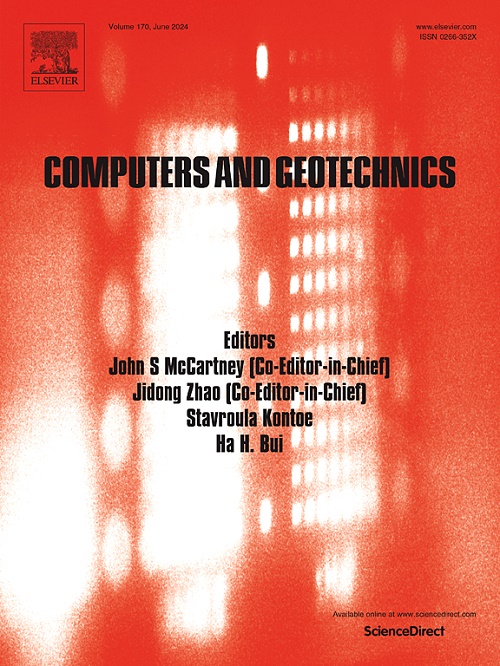Investigation on the interaction between the piggyback pipeline and the sediment seabed under wave and current
IF 6.2
1区 工程技术
Q1 COMPUTER SCIENCE, INTERDISCIPLINARY APPLICATIONS
引用次数: 0
Abstract
Piggyback pipelines, as an emerging form of submarine pipeline structure, offer higher operational efficiency and lower costs compared to traditional single pipelines, and have gradually become a widely adopted solution in offshore engineering. However, under extreme sea states and complex wave-current conditions, it is more vulnerable to damage. Therefore, in this study, a three-phase coupling model of air–water and water–sediment is developed based on a numerical flume. The variations in the flow field and vortex distribution around the piggyback pipeline are analyzed for different current velocities, solitary wave heights, pipeline diameters, relative suspended heights and gap ratios. Unlike single pipelines, the variation of the flow field and the vortex behind the pipeline becomes more complicated due to the existence of the small pipe. The results show that both environmental conditions and pipeline layout significantly influence the hydrodynamic characteristics and local scour of the piggyback pipeline. By selecting an appropriate pipeline diameter and adjusting the relative suspended height and gap ratio, the equilibrium scour depth and maximum hydrodynamic force acting on the piggyback pipeline can be effectively reduced, thereby enhancing the service life of the pipeline.
波浪和水流作用下管道与海底沉积物相互作用的研究
背驮式管道作为一种新兴的海底管道结构形式,相对于传统的单管道具有更高的运行效率和更低的成本,已逐渐成为海洋工程中广泛采用的解决方案。然而,在极端海况和复杂的海流条件下,它更容易受到损坏。因此,本文基于数值水槽建立了气-水-水-沙三相耦合模型。分析了不同流速、孤立波高、管道直径、相对悬浮高度和间隙比下,背驮式管道周围流场和涡流分布的变化规律。与单一管道不同,由于小管道的存在,流场和管道后涡的变化变得更加复杂。结果表明,环境条件和管道布置对管道的水动力特性和局部冲刷有显著影响。通过选择合适的管径,调整相对悬浮高度和间隙比,可以有效降低平衡冲刷深度和作用在背载管道上的最大水动力,从而提高管道的使用寿命。
本文章由计算机程序翻译,如有差异,请以英文原文为准。
求助全文
约1分钟内获得全文
求助全文
来源期刊

Computers and Geotechnics
地学-地球科学综合
CiteScore
9.10
自引率
15.10%
发文量
438
审稿时长
45 days
期刊介绍:
The use of computers is firmly established in geotechnical engineering and continues to grow rapidly in both engineering practice and academe. The development of advanced numerical techniques and constitutive modeling, in conjunction with rapid developments in computer hardware, enables problems to be tackled that were unthinkable even a few years ago. Computers and Geotechnics provides an up-to-date reference for engineers and researchers engaged in computer aided analysis and research in geotechnical engineering. The journal is intended for an expeditious dissemination of advanced computer applications across a broad range of geotechnical topics. Contributions on advances in numerical algorithms, computer implementation of new constitutive models and probabilistic methods are especially encouraged.
 求助内容:
求助内容: 应助结果提醒方式:
应助结果提醒方式:


